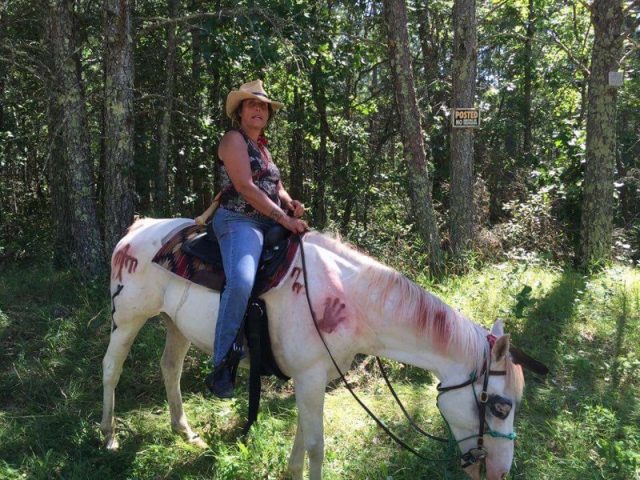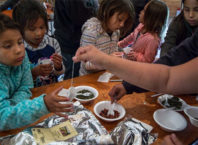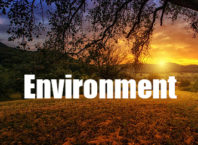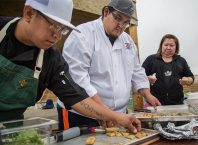In July Winona LaDuke, executive director of Honor the Earth, lead a horse ride along Enbridge’s proposed route for Sandpiper and Line 3 in Minnesota. The horse ride followed the Enbridge proposed route between two of the most important wild rice producing lakes for the Ojibwe, both called Rice Lake – which were established as federal wild rice refuges by Congress for the exclusive use of the Chippewa at the beginning of the 20th century.
——————————–
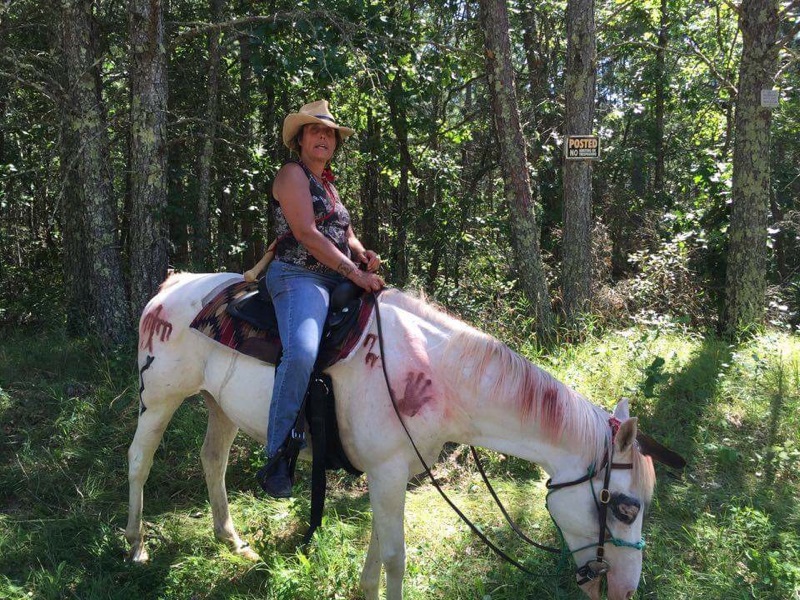 The road is interesting. Many of us do not travel these days. Opting instead to rest at home, often with the television or Facebook. We have become comfortable to view much of the world from the inside of our houses, sometimes our air-conditioned houses. That is until the big storms hit and there is no power.
The road is interesting. Many of us do not travel these days. Opting instead to rest at home, often with the television or Facebook. We have become comfortable to view much of the world from the inside of our houses, sometimes our air-conditioned houses. That is until the big storms hit and there is no power.
Let me tell you what it was like on the road for me. I’ve ridden horse for the past five days through the l855 treaty area, through Anishinaabe Akiing. I follow Dakota riders from the Santee Nation, who took their name in this world from this place – Isanti, the people of the knife. For eight thousand years, the people came to this territory to get good materials for knives – the primary equipment for feeding yourselves. Long before the concentrated animal feeding operations (CAFO) our people used knives and knew the land.
I am riding with Ojibwe people as well. We are riding together, through our territory, the territory upon which the Creator placed us. It is long after the l826 treaty, when the new white man, US government made a treaty between our nations. We had always made our own treaties and agreements before that. That is, after all, how nations govern themselves.
For many of the young men who joined us, this is the first time they have seen the lands of their ancestors. The riders include Iyokpiya Eastman, Monga, Matt, Jason (Skinny Bull) Garret, Westley and a little man of seven; Wakanhdi.
Many of these man have ridden with the Dakota 38 riders, those who commemorate the 38 plus 2 who were hung in Mankato in l864, the largest mass hanging in US History. These are the survivors of those families. And they are the most amazing riders, riding through minus zero temperatures for two hundred miles on horseback. They are strong riders.
The Ojibwe riders are led by Todd Utrech and Annie Humphrey. These are real riders, bronc and bull riders, thousands-of-miles-a-year-on-horse-back riders. Riders, with a big R. I am a rider with a little R, a “little C” cow girl. I tell the young men that, and we all laugh. Each, in our own way, is humbled by the horses and the beauty of the land.
We began our journey at East Lake, Minisikaaning Minis, in the traditional territory of the Rice Lake Band of Anishinaabeg, home of several of the traditional drums of our nation, and the land near Sandy Lake. Sandy Lake is the place where hundreds of our people died. They died from starvation in the hard cold winter and their forced death march, brought about by the federal government – that was l850. We remember them.
We stay at a place the Mille Lacs Band has purchased, and is now returning to a farm as a part of work to grow food for the community. Wolves are out at night, especially on a full moon, and the land is lush with the rains. Most of us camp but we keep a washing room at the local hotel, the Country Meadows. We can’t have more than a room there because the rest of the hotel is rented out to Canadian Mining companies, which have permits to explore for the miskwaabik, the copper ore.
The Tamarack Mine interests leased 35,000 acres of land not far from Big Sandy and Round lakes, and at last count had over l24,000 feet of drill core samples. The project is a venture of Talon Mining and Rio Tinto Zinc/Kennecott (the largest copper mining company in the world). A year ago, when I came to this village for the funeral of Mushkooub Aubid, the hotel was also booked by exploration crews. Geologists estimate more than 10 million tons of mineable ore lie below.
Sadly, copper mining today is pretty much scraping the bottom of the barrel. The recovery ratio for copper is 0.16%, much smaller than the average for other metals (4.5%). In other words, you need to remove 1,000,000,000 tons of material to recover 1.6 tons of copper. The only substance with a lower recovery rate is gold. It makes a big mess of sulfuric acid and such; and the copper mining itself takes more energy annually than anything in the whole county would take for twenty years.
Talon officials say the copper and other valuable minerals are roughly 1,000 to 1,500 feet below the surface and that the mine “will be an underground mine, if it is able to get through Minnesota’s exacting permitting process,” or, essentially to get past the strict regulations which protect wild rice. The companies are putting a lot of money into that gamble.
The Mille Lacs Band and village of Minisiwaaning are facing not only the proposed Enbridge pipelines, but also the mining projects. That is where we begin.
The rice is good, the bergamot good, the water has gone down, enough for us to ride.
We cover the walls of our houses with family pictures to remember who we are and where we came from, and to link ourselves to our history, and hold ourselves up in front of our ancestors so that they can see how we are doing in this world.
We all love to look at our pictures, not just our selfies. So it is that I love to look at my family on the land, and to meet many of these relatives. I can say that in as much as an Anishinaabe person considers most of the living world to be indinawaymuganidoog (my relatives) I like to see how the land looks; and a very good way to do that, is in a canoe, or on a horse. In other words, slowly. The world is best savored in that way.
What I notice is the incredible heat. It’s the hottest year in history here in the north country, or Anishinaabe Akiing. That is on top of the hottest each year before that. It’s beyond a fluke, it’s climate change. Syria has not had rain for 5 years, and last year’s heat index in Tehran was at l63, which has probably been broken this year. So how do you survive? You are on the lake or river continuously; and if you are on a horse you will be taking a rest, or taking it slow. So our horses take it slow, ride in the shade, and we drink so much water. The longer term question of how we survive is a bit more challenging.
I look for other horses and livestock; both it seems dwindling in numbers as there are fewer farms in the region, many which look lonely. And yet there are some amazing places. We stay at Lynn Meisner’s farm near Palisades where she raises chickens, hens, sheep, and vegetables. She is in love with her land and life by the river. I met her because Enbridge came to her door to survey and she refused them. She told them to leave and that if they trespassed, their cars would not be operational. Then she called the Sheriff about Enbridge. They never did get her approval and the pipeline’s proposed route had to go around her. Yes, around her. You meet some pretty cool people when you are defending your land.
Then I meet John Chate, a blueberry and angus cross cattle farmer. His blueberries are rocking out of this world this summer. John and his family are facing a power line which Great River Energy would use to power the pipeline (each pumping station needs about l0 megawatts of power, or more then enough to power every household on my reservation). The power would likely come from coal plants far away, and Enbridge would be one of the largest customers in the area. Good for business, some would say…
All I know is that as I pick blueberries in a gentle rain, is that it is a great year for blueberries. I notice that most of the herbs and berries seem to be very early, and that the corn and crops are high in the fields. The crops seem to be good. The water has not impacted the wild rice too much, I think because of the sun; and it looks to be a good crop there as well.
On day four of the ride, we are faced with incredible heat and the aftermath of incredible winds. Northern Minnesota has record storm damage. Munich Re, the world’s largest reinsuring agency has projected that we will be spending 20% of world GDP on climate change disasters and impacts by 2020, and I am starting to believe it. We’ve had some billion dollar storms already, and the pricetag of July’s winds and storms in northern Minnesota, beyond the lives lost, will be pretty high for many. I am not sure who will be paying for it all.
We collect water near Outing, at a spring which would be devastated by a pipeline spill and is the only spring… the only place to collect water these days for all the northerners. There is no electricity, there is no water. So I collect 50 gallons of drinking water for horses and people from the spring, a sacred and beautiful place for our people for a thousand years. Like Rice Lake village, this past week, the only place to get water for the community was at Big Bear Spring. It would seem that those springs are worth protecting. It turns out you can live without electricity, but not without water.
Many roads are impassible and trees have crashed all over. There are no monarch butterflies. We do not see them as I think that the BT corn took a toll on them – that is the genetically engineered plants. And the Bees are short in numbers. But along one county road I am dive-bombed by small butterflies. My horse is dive bombed too. It is nice to see them.
Our last night on the road is at Hunt Utilities, where solar, and thermal greenhouses create astounding gardens, providing food for 23 families. A wind turbine nourishes a sustainable economy and world for the future; the one we will need in a time when the climate is changing.
That is the road ahead, surely. Solar energy and other renewables surpassed new fossil fuel projects when the world added 143 gigawatts of renewable electricity capacity, compared with 141 gigawatts in new plants that burn fossil fuels, according Bloomberg financial analysts. And there are more jobs in the renewables and efficiency even today – about three times as many.
It turns out that you can spend a million dollars and get .8 jobs in the oil and gas industry, or 1.9 jobs for a million dollars in the coal industry. After all, the Sandpiper’s long term jobs are at 23 or so for the proposed pipeline – a lot of steel and not a lot of people. Compare that to building retrofits for energy efficiency (7 jobs per million), mass transit services (11 jobs), building the smart grid (4.3), wind (4.6), solar (5.4), and biomass power generation (7.4 per million dollars invested). I really think that is the road ahead.
A couple of weeks ago the power went out at my house, that is the power that Itasca Mantrap provided to me. What stayed on while the power was out everywhere else was the power over my kitchen table. That was solar. That solar collector was installed by tribal members with Solar Energy International. I’d like to see more of that.
The road through our territory is still likely to be full of trees, down from the winds of a changing climate, and more violent storms will come to our land. The paths Dakota and Anishinaabeg traveled long ago, trade routes, routes for water, and routes to follow our harvests, either by canoe, foot or horse remains. As do our relatives. The road or path ahead is to be determined and I think that is by us. Ji misawaabandaaming.


